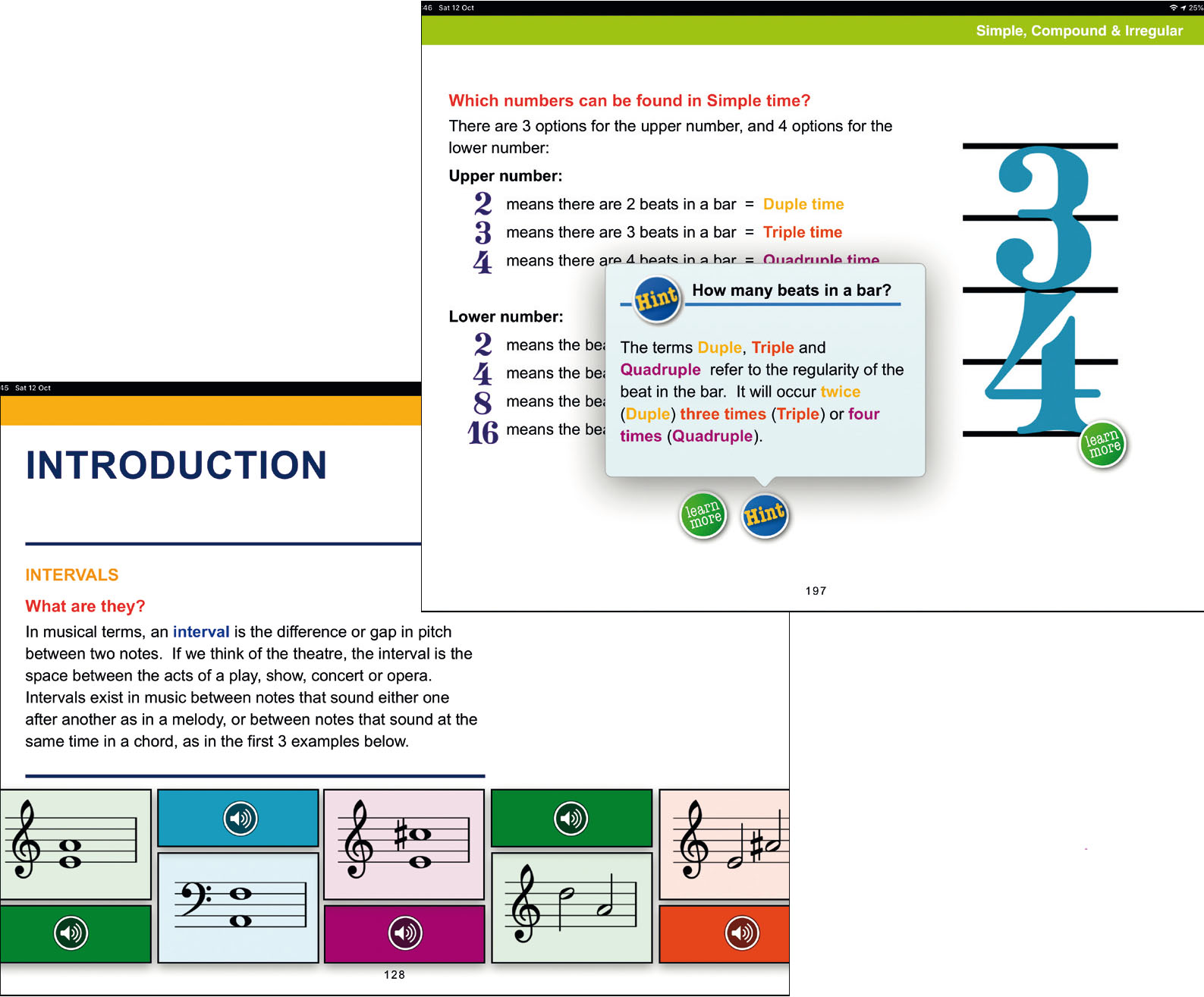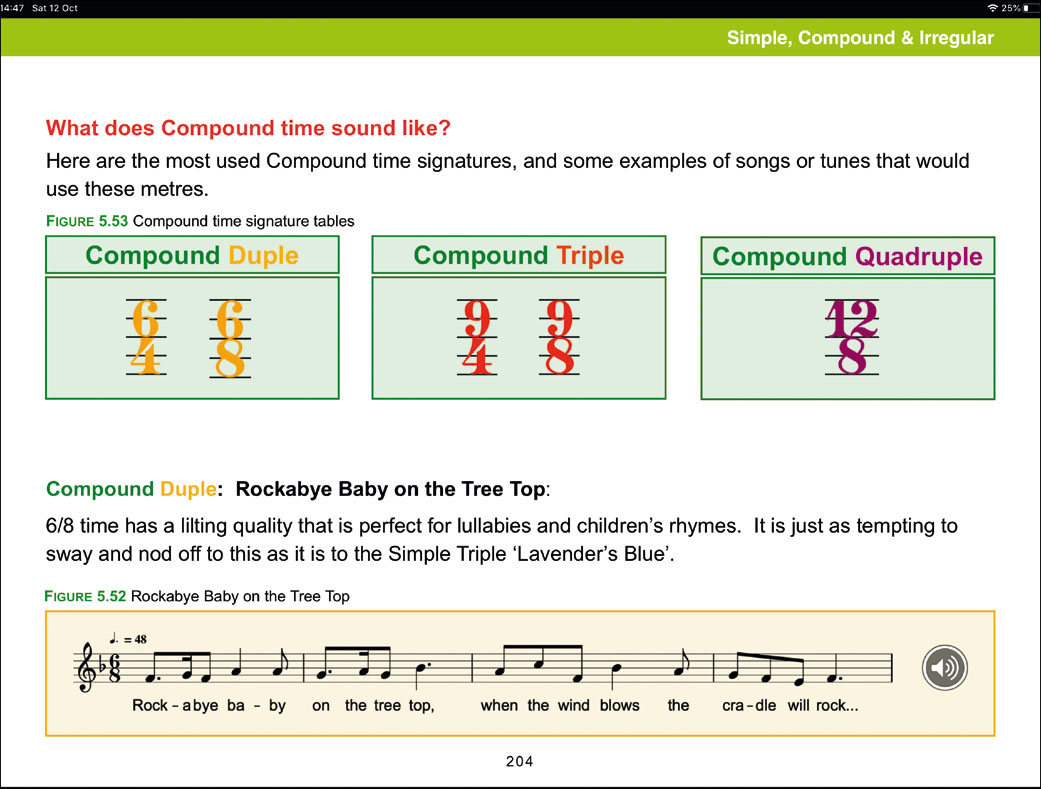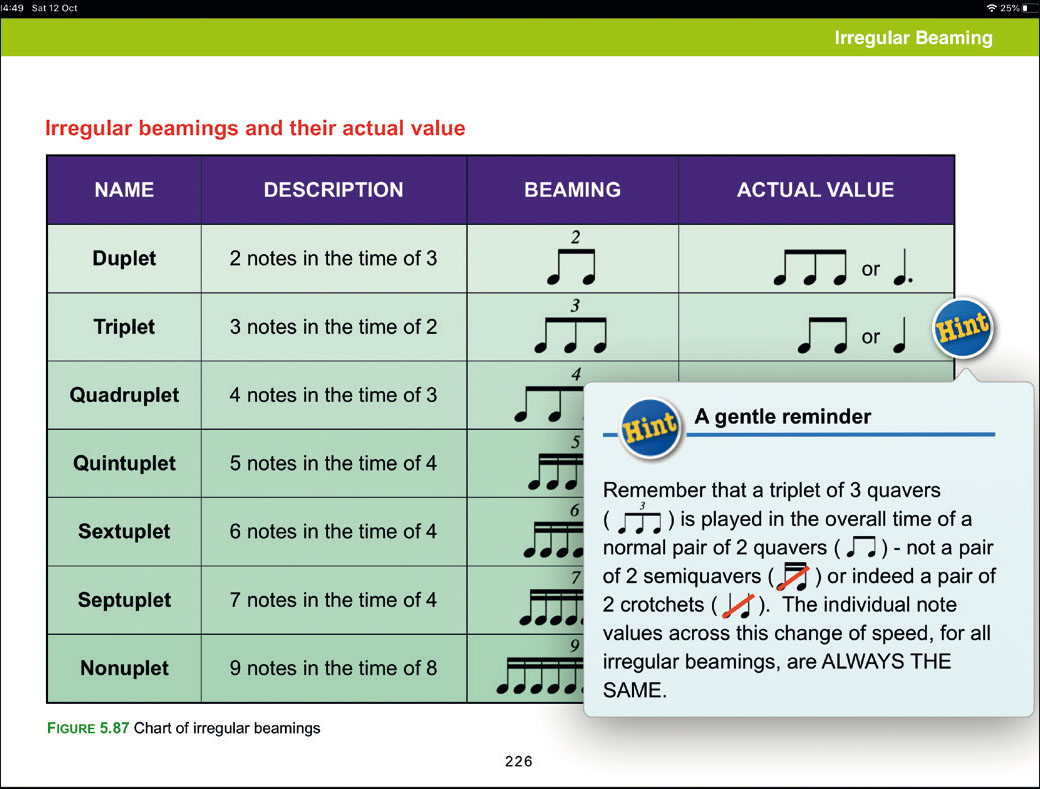
This interactive music theory ebook is billed as ‘a clear and engaging interactive guide starting with the basics.’ Its target market is anyone looking to get help with theory and notation, including self-taught ‘by ear’ musicians and parents who want to support their children's learning. It is available only on Apple devices at present and can be purchased through Apple Books or iTunes. I tested it on an iPhone (absolutely fine in landscape format) but an iPad, where the text size and interactivity would be more intuitive, might make for a more optimised experience.
The book's interactive features include an instant glossary to look up technical terms without having to leave the current screen; pop-out enlargeable diagrams; ‘live’ tables (eg where clicking on the name of a scale makes notation appear); hundreds of supporting sound files; and various pop-up hints and tips to help with the frequent games and quizzes. Readers can also add their own notes and comments, which are then collated in a ‘my notes’ section. It's clear that the authors have put serious time and investment into what they envisage to be a game-changing resource.
After a brief introductory user guide, the book proper opens with a chapter entitled ‘Reading Music’. This begins by explaining why reading music matters; how US and UK notation terminology differs; how different people might get to grips with notation differently; and how notation and theory are linked to related topics like why some chords sound sad and others happy. In this way the book sets itself up as an authority, not just on the rudiments of music theory, but also on why theory matters and how it can enhance our experience of making music. Other chapters address the structure of music (keys, scales and modes), intervals, pulse and time, and to end with, a taster of what could perhaps be studied next: cadences, transposition, ornaments and instrument families (among other things) – presumably topics for a second volume.
To give a flavour of how the interactivity works, I'll choose a chapter at random: ‘Intervals’. The first few pages discuss what intervals are and their function in music. At the base of each page are various notated intervals that you can touch and hear. Increasingly advanced terms (melodic vs harmonic intervals; compound intervals) are introduced next, again with opportunities to click and listen. Then it's time to learn about the rules for naming intervals, interspersed with quick tests and games. I liked the ‘hint’ and ‘learn more’ buttons, which provide additional information in pop-up boxes. A ‘US’ button is also handily provided each time an equivalent piece of terminology needs to be introduced (eg a semitone is called a half-step in the US).
I can't argue with any of the chapter topics or the information included within them. Each chapter is as comprehensive as you could wish for, and the presentation is both colourful and clean. And, impressively for a new interactive ebook, I didn't encounter a single technical glitch.

Each chapter is as comprehensive as you could wish for, and the presentation is both colourful and clean
This is a ‘read carefully and explore’ kind of resource rather than ‘dive in and do’. What is on offer here – a clear and thorough instructional guide to music theory – is text based, with the ebook technology used to provide a broad and impressive range of supplementary features. These features will more than likely enhance the learning process, but they do not comprise a wholly new model for digital learning. Rather, this is a ‘book plus’ – something that will please those looking for a modern theory manual to explore on an iPad.
Because of the in-depth nature of its explanations, I would recommend this book for students of secondary school age and older. Younger learners may well enjoy the interactive features but might need a teacher or an informed parent to ‘translate’. Given prevailing consumer expectations for free or almost-free digital content, £23.99 might initially seem steep, but this is justified when the book is sampled and the amount of work that has gone into it is fully appreciated.
To sum up, Keys to Music Theory 1 is an impressive resource, packed full of important information that is stylishly packaged with innovative technical features. I wish the authors every success as they continue to develop the project.










